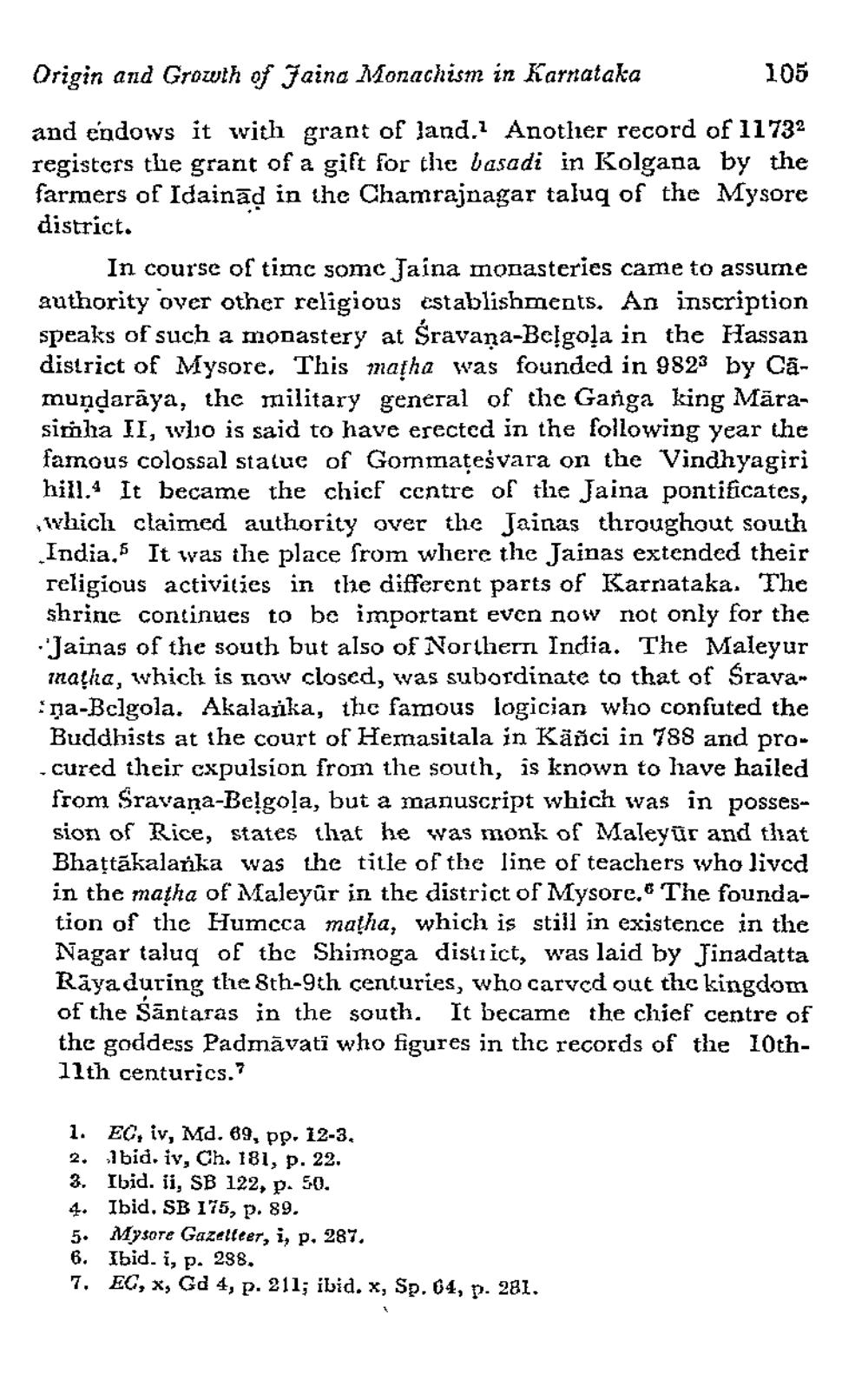________________
10
Origin and Growth of Jaina Monachism in Karnataka and endows it with grant of land.1 Another record of 11732 registers the grant of a gift for the basadi in Kolgana by the farmers of Idainād in the Chamrajnagar taluq of the Mysore district.
In course of time somc Jaina monasteries came to assume authority over other religious establishments. An inscription speaks of such a monastery at Sravana-Belgola in the Hassan district of Mysore. This matha was founded in 9823 by Camundarāya, the military general of the Ganga king Mārasimha II, wlio is said to have erected in the following year the famous colossal statue of Gornmatesvara on the Vindhyagiri hill.4 It became the chicf centre of the Jaina pontificates, , which claimed authority over the Jainas throughout south India 5 It was the place from where the Jainas extended their religious activities in the different parts of Karnataka. The shrinc continues to be important even now not only for the Jainas of the south but also of Northern India. The Maleyur matha, which is now closed, was subordinate to that of Sravana-Bclgola. Akalajka, thc famous logician who confuted the Buddhists at the court of Hemasitala in Kāñci in 788 and procured their cxpulsion from the south, is known to have hailed from Sravana-Belgoļa, but a manuscript which was in possession of Rice, states that he was monk of Maleyür and that Bhattākalanka was the title of the line of teachers who lived in the matha of Maleyûr in the district of Mysore. The foundation of the Humcca matha, which is still in existence in the Nagar taluq of the Shimoga dislı ict, was laid by Jinadatta Rāyaduring the 8th-9th centuries, who carved out the kingdom of the Sāntaras in the south. It became the chief centre of the goddess Padmāvati who figures in the records of the 10th11th centurics.?
1. EC, iv, Md. 69, pp. 12-3. 2. Ibid. iv, Ch. 181, p. 22.
Ibid. ii, SB 122, p. 50.
Ibid. SB 175, p. 89. 5. Mysore Gazetteer, i, p. 287. 6. Ibid. i, p. 238. 7. EC, X, Gd 4, p. 211; ibid. x, Sp. 64, p. 281.




